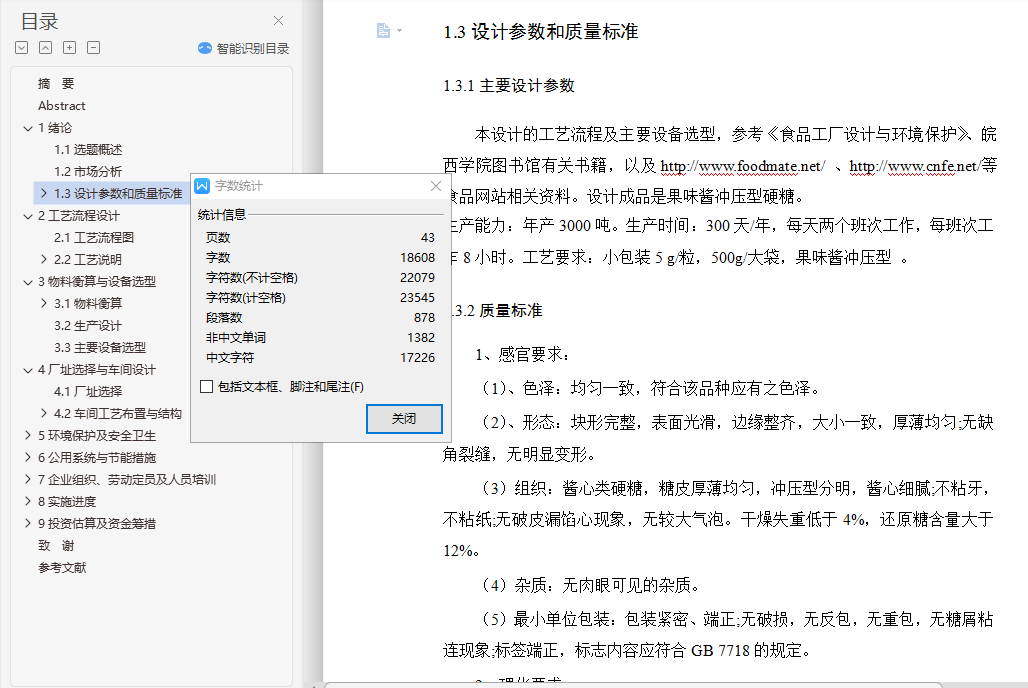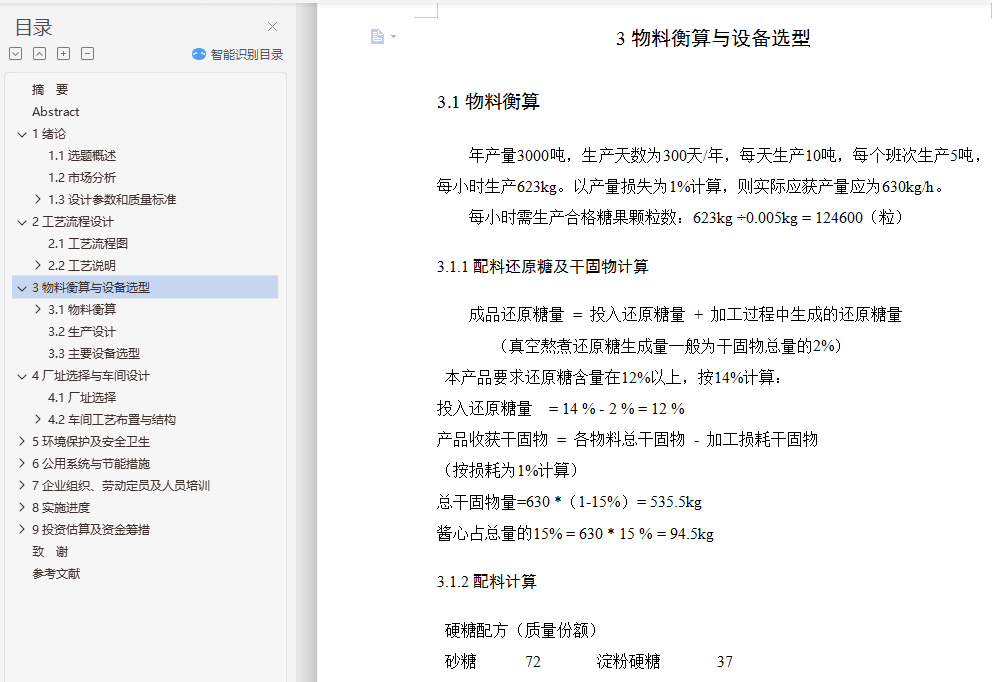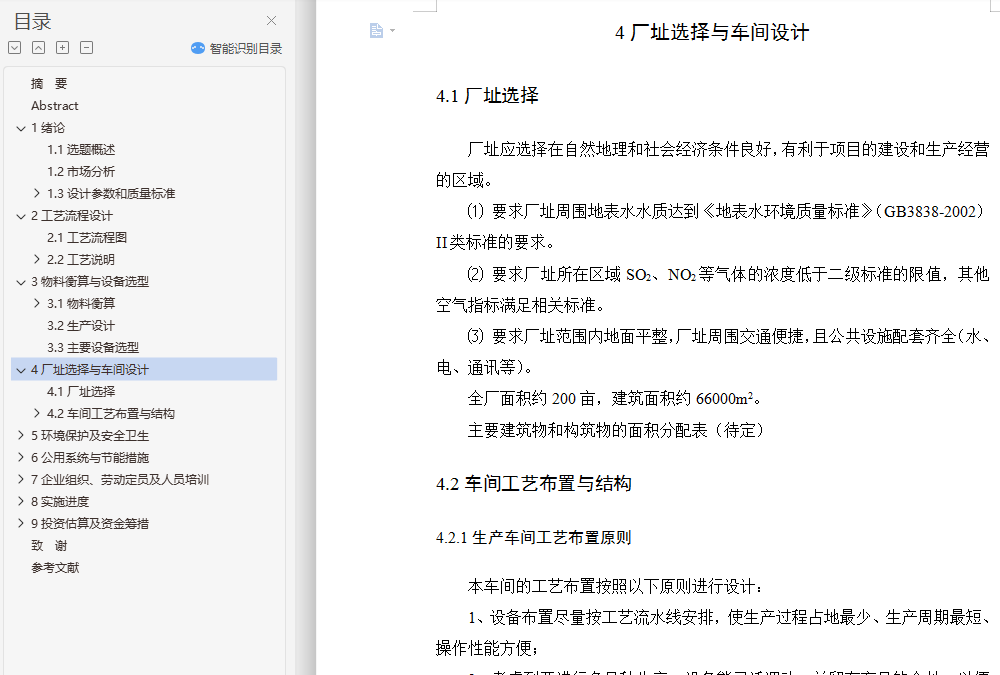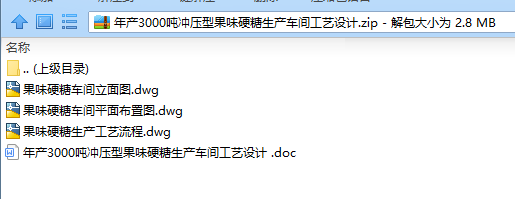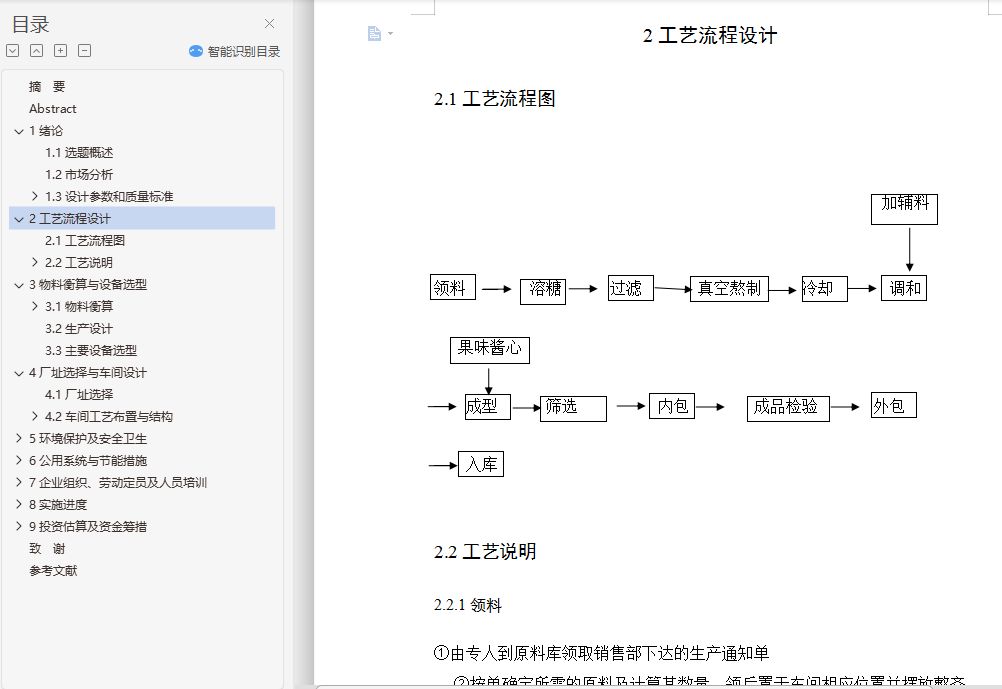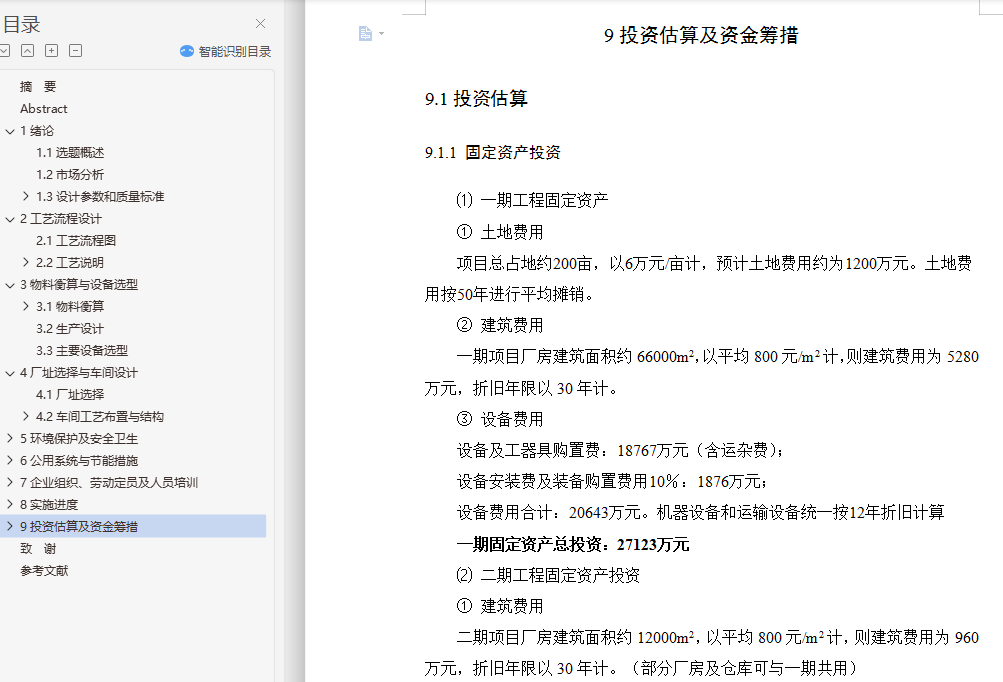摘 要
硬糖是经高温熬煮而成的糖果。干固物含量很高,约在97%以上。糖体坚硬而脆,故称为硬糖。属于无定形非晶体结构。比重在1.4~1.5之间,还原糖含量范围10~18%。入口溶化慢,耐咀嚼,糖体有透明的、半透明的和不透明的,也有拉制成丝光状的。硬糖中所用的调味材料包括两部分:一是水果味型的硬糖,它们所用的调味材料有香料、香精和有机酸。最理想的是天然香料,不但香味醇和,而且无毒无害。合成香精是由酯类、醛类、酮类、醇类、酸类、烯萜类等各种芳香化合物调制而成。香气强烈,添加过量有碍食品卫生,添加量不得超过食品卫生标准的限量。柠檬酸是糖果中调味的主要有机酸。此外,也可以用酒石酸,乳酸或苹果酸。调味材料在形成硬糖的风味上起着重要作用。
本文是年产3000吨冲压型果味硬糖生产车间工艺设计,在开展可行性研究的基础上,查阅了大量的资料,进行了详细的工艺论证;在此基础上进行了物料衡算、热量衡算,对主要设备进行选型,最后进行了经济技术分析。
关键词:果味;硬糖;车间;工艺;计算
Abstract
Hard candy is a candy cooked at high temperature. The dry solid content is very high, about 97% above. Sugar is hard and brittle, so it is called hard sugar. It belongs to amorphous structure. The specific gravity was between 1.4 and 1.5, and the reducing sugar content ranged from 10 to 18%. Slow ingress, chewing resistance, sugar transparent, translucent and opaque, also pulled into Mercerized. The flavoring materials used in hard sugars consist of two parts: one is fruit-flavored hard sugar, and they use flavoring materials such as spices, flavours and organic acids. The most ideal is natural spices, not only aromatic and mellow, but also non-toxic harmless. Synthetic flavours are composed of esters, aldehydes, and aldehydes. All kinds of aromatic compounds, such as ketones, alcohols, acids, terpenes and so on, are modulated. Strong aroma, excessive addition is harmful to food hygiene, the amount should not exceed the limit of food hygiene standards. Citric acid is the main organic acid in candy flavoring. In addition, tartaric acid, lactic acid or malic acid can also be used. Flavoring materials play an important role in the formation of the flavor of hard sugar.
This paper is a process design of 3000 tons of punched fruit-flavor hard sugar production workshop. Based on the feasibility study, a large number of data are consulted and detailed technological demonstration is carried out. On this basis, the material balance, the heat balance, the selection of the main equipment, and the economic and technical analysis are carried out.
Key words: fruit flavor; hard sugar; workshop; process; calculation
目 录
摘 要 I
Abstract II
1绪论 1
1.1选题概述 1
1.2市场分析 2
1.3设计参数和质量标准 3
1.3.1主要设计参数 3
1.3.2质量标准 3
2工艺流程设计 5
2.1工艺流程图 5
2.2工艺说明 5
2.2.1领料 5
2.2.2化糖 5
2.2.3过滤 6
2.2.4真空熬制 6
2.2.5冷却 6
2.2.6加辅料、调和 7
2.2.7成型 7
2.2.8筛选 7
2.2.9内包装 8
2.2.10成品检验 8
2.2.11 外包 8
2.2.12入库 8
3物料衡算与设备选型 9
3.1物料衡算 9
3.1.1配料还原糖及干固物计算 9
3.1.2配料计算 9
3.2生产设计 10
3.3主要设备选型 11
4厂址选择与车间设计 13
4.1厂址选择 13
4.2车间工艺布置与结构 13
4.2.1生产车间工艺布置原则 13
4.2.2糖果车间平面布局的特点 13
5环境保护及安全卫生 15
5.1环境保护 15
5.1.1 项目建设对环境的影响 15
5.1.2 项目生产过程产生的污染物对环境的影响 15
5.2 环境保护措施方案 15
5.2.1 采用环境保护措施的依据 15
5.2.2 治理措施方案 15
5.3 环境影响评价 17
5.4生产车间的安全卫生 18
5.4.1 车间生产的要求 18
5.4.3 生产过程中存在的主要危害因素 19
5.4.4 安全措施方案 19
5.4.5 工业卫生 21
5.5 全厂性生活设施 22
5.5.1 办公楼(综合楼) 22
5.5.2 食堂(会议室) 22
5.6更衣室 23
5.7浴室 23
5.8厕所 24
5.9消防 24
5.9.1 防火等级 24
5.9.2 消防设施方案 24
6公用系统与节能措施 26
6.1用水量的估算 26
6.2蒸汽耗量的估算 26
6.3项目用能特点及节能原则 27
6.4节能措施 27
6.5节水措施 28
6.6全厂管网管径 的确定 29
的确定 29
7企业组织、劳动定员及人员培训 30
7.1组织机构 30
7.1.1 项目法人组建方案 30
7.1.2 管理机构组织方案 30
7.1.3 生产和辅助生产车间组织方案 30
7.1.4 项目组织结构图示 30
7.2 人力资源配置 31
7.2.1 工作制度 31
7.2.2 劳动定员数量及技能素质要求 31
7.2.3 员工来源及招聘方案 32
7.2.4 职工工资及福利 32
7.2.5 员工培训计划 32
8实施进度 34
8.1 项目实施进度计划说明 34
8.2 项目实施进度计划表(待定) 34
9投资估算及资金筹措 35
9.1投资估算 35
9.1.1 固定资产投资 35
9.1.2 流动资金投资 36
9.2资金筹措及建设期利息 36
致 谢 37
参考文献 38
